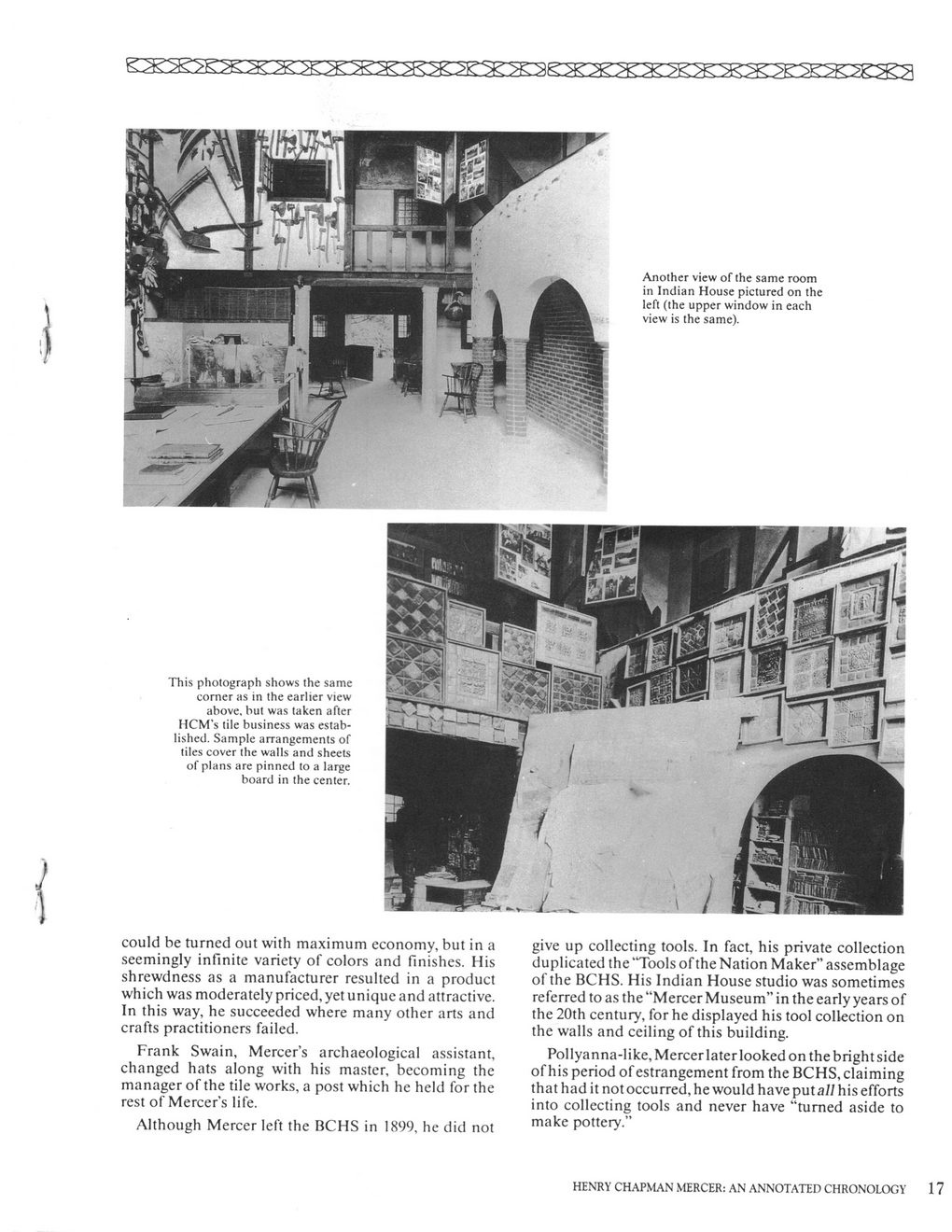This text was obtained via automated optical character recognition.
It has not been edited and may therefore contain several errors.
Another view of the same room in Indian House pictured on the left (the upper window in each view is the same). g§5f^5f'*S •s&aL This photograph shows the same corner as in the earlier view above, but was taken after HCM’s tile business was established. Sample arrangements of tiles cover the walls and sheets of plans are pinned to a large board in the center. could be turned out with maximum economy, but in a seemingly infinite variety of colors and finishes. His shrewdness as a manufacturer resulted in a product which was moderately priced, yet unique and attractive. In this way, he succeeded where many other arts and crafts practitioners failed. Frank Swain, Mercer’s archaeological assistant, changed hats along with his master, becoming the manager of the tile works, a post which he held for the rest of Mercer’s life. Although Mercer left the BCHS in 1899, he did not give up collecting tools. In fact, his private collection duplicated the ‘Tools of the Nation Maker” assemblage of the BCHS. His Indian House studio was sometimes referred to as the “Mercer Museum” in the early years of the 20th century, for he displayed his tool collection on the walls and ceiling of this building. Pollyanna-like, Mercerlater looked on the bright side of his period of estrangement from the BCHS, claiming that had it not occurred, he would have put all his efforts into collecting tools and never have “turned aside to make pottery.” HENRY CHAPMAN MERCER: AN ANNOTATED CHRONOLOGY

Bucks-Mont, Pennsylvania Bucks County Hist Soc - Henry Chapman Mercer (19)